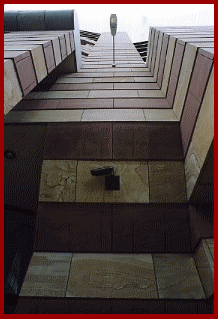Top 10 Things to Know about CCTV Transmission
Doktor Jons section on transmission systems is designed to provide a general grounding on the various techniques used for relaying a video signal from A to B. As you would expect, this subject more than any other requires some degree of engineering knowledge in order to make absolute sense of it all. By way of an example, there was a rumour some years ago that based on absolutely no working knowledge at all, the most basic type of copper co axial cable had mistakenly been used alongside an electrified railway track.
Would you believe it, everytime a train pulled into or out of the station, the electrical pulse caused by the motor, would scramble all the video pictures. By trying to save costs on materials, the hapless manager had racked up an enormous bill to put the problem right .... not to mention totally ruining any prospects of early promotion!! In the near future, Doktor Jon will steadily increase the amount of CCTV technical information made available on this complex subject, but in the meantime, here’s some hopefully useful tips to be going on with:- 1) Co axial copper cables are still the cheapest and most reliable option for most applications - choose double screening where appropriate.
2) Twisted pair and telephone copper cables may be a lot less expensive than co-ax, but you still have to buy all the balancing equipment.
3) Keep it simple; the more equipment you incorporate into a transmission system, the more that can go wrong .... and that can be expensive.
4) Fibre Optic provides a delightful degree of flexibility and is generally very reliable, but it can cost serious money to do all what you want!
5) With only six ‘licence exempt’ microwave channels available in the UK, it can be difficult to use this technique in a large city location.
6) Network transmission may indeed be the future for commercial CCTV, but it can create far more problems than it solves, if used incorrectly.
7) Telephone or internet transmission of video images offers enormous future potential, for remote visual verification of incidents in progress.
8) Radio transmission may be illegal in the UK, but in other remote locations, it can provide a cheap, reliable and flexible solution.
9) Laserlink transmission may be prohibitively expensive for many applications, but all that may yet change in the very near future.
10) Mobile phone (cellular) video streaming for security use, could be the ‘killer application’ that the service providers have been looking for! The next five years are likely to see some quite spectacular developments, in terms of what CCTV or OCRA surveillance systems can and will achieve; and yet Doktor Jon would suggest that the manufacturers need to address the requirements for the end user, and not simply design and produce flashy products, which simply end up looking for a suitable market. | |
| IMPORTANT: No material may be reproduced, copied or redistributed from this site,
without the express written consent of doktorjon.co.uk
All the detailed information on this site is provided in good faith; and as such, Doktor Jon
does not accept responsibility for any consequential loss, injury or disadvantage
resulting from any individual or organisation acting on the details contained herein. © doktorjon.co.uk 2004 - 2008 Homepage...:...Gateway...:...Technical Gateway....:....Quickfind Index....:....Equipment Directory
Site Index...:...About this site....:....CCTV Helpdesk....:.... The Forum ....:....Contact Doktor Jon | | |




